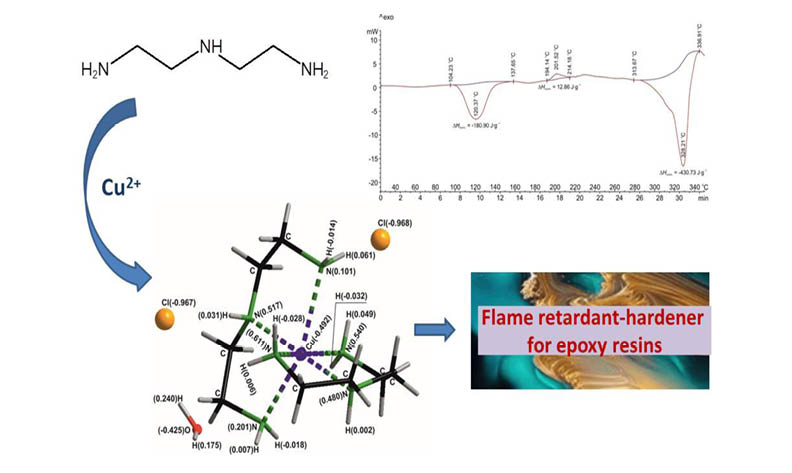Synthesis, crystal and electronic structure, and thermal behavior of a new flame retardant-hardener [Cu(diethylenetriamine)2]Cl2•H2O for epoxy resins
DOI:
https://doi.org/10.17344/acsi.2024.9051Abstract
A copper(II) chelate complex with diethylenetriamine (deta), [Cu(deta)2]Cl2·H2O (1), was synthesized by direct interaction of solid copper(II) chloride dihydrate with deta. Complex 1 was characterized by X-ray structural analysis, infrared (IR) spectroscopy and differential scanning calorimetry (DSC) and was studied as a flame retardant-hardener for epoxy resins. The crystals of 1 consist of [Cu(deta)2]2+ cations, Cl– anions and uncoordinated water molecules. Each Cu(II) atom is chelated with two tridentate molecules of deta, which bond to the central Cu(II) atom in a non-equivalent manner. This results in a distorted tetragonal bipyramidal environment around the Cu(II) atom. The crystal packing of the structural units in 1 is determined by both the dominant cation-anion interaction and strong hydrogen bonds, such as N–H···Cl, N–H···O, and O–H···Cl. Density functional theory (DFT) calculations were performed to determine the electron structure of 1 using the restricted formalism of B3LYP method with a 6-31G* orbital basis set. The d-orbitals of the Cu2+ ion are split due to the interaction of a tetragonal bipyramidal environment and the chelation, resulting in the visually observed dark blue color of crystals of 1. This color closely corresponds to the calculated value of the visible light wavelength (λ = 661.37 nm), which is related to the energy of photons absorbed by the complex (Δ = 1.874 eV).

Downloads
Published
Issue
Section
License
Copyright (c) 2025 Borys Mykhalichko, Helen Lavrenyuk, Volodymyr Olijnyk, Yurii Slyvka, Oleg Mykhalichko, Yuriy Starodub

This work is licensed under a Creative Commons Attribution 4.0 International License.
Except where otherwise noted, articles in this journal are published under the Creative Commons Attribution 4.0 International License
